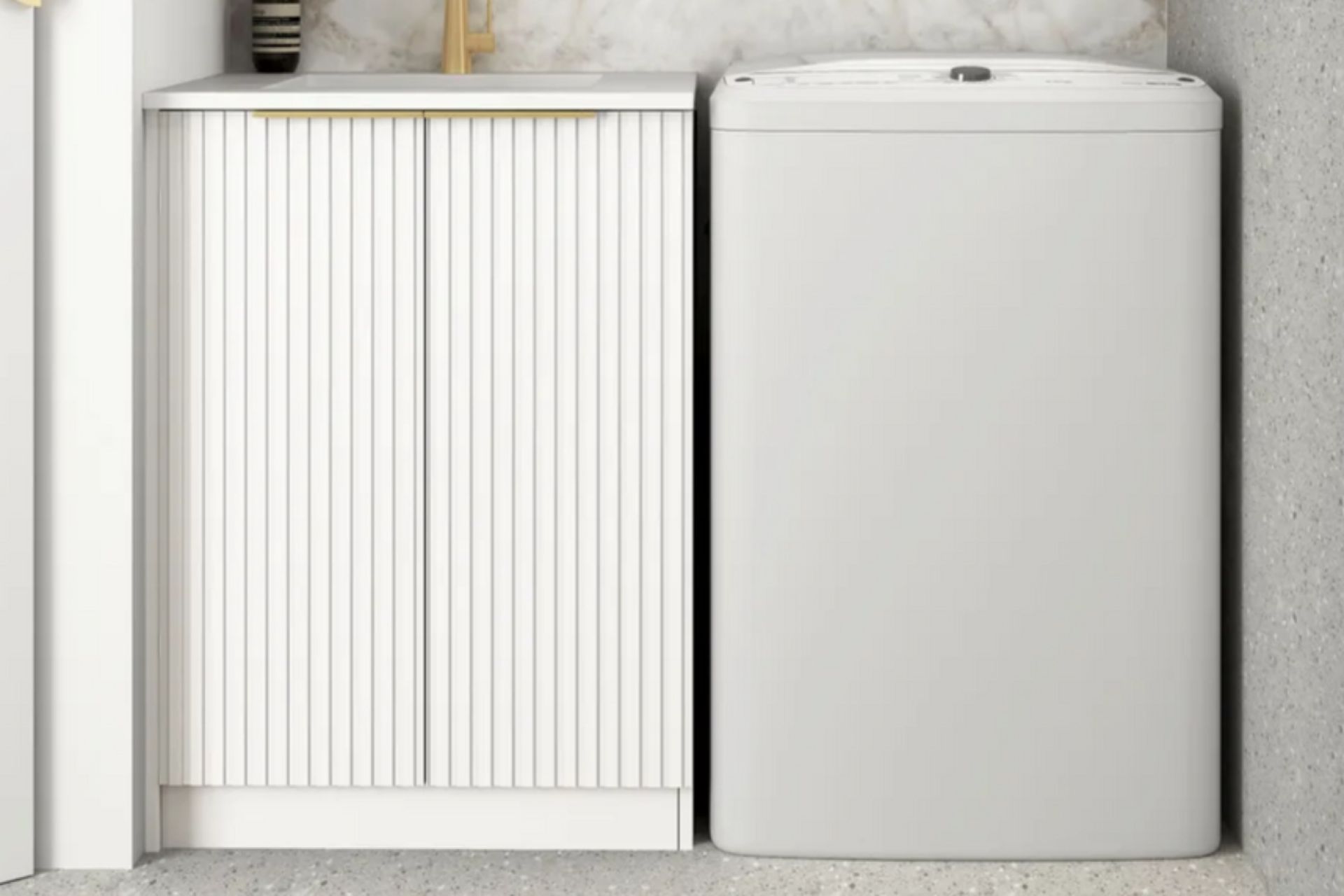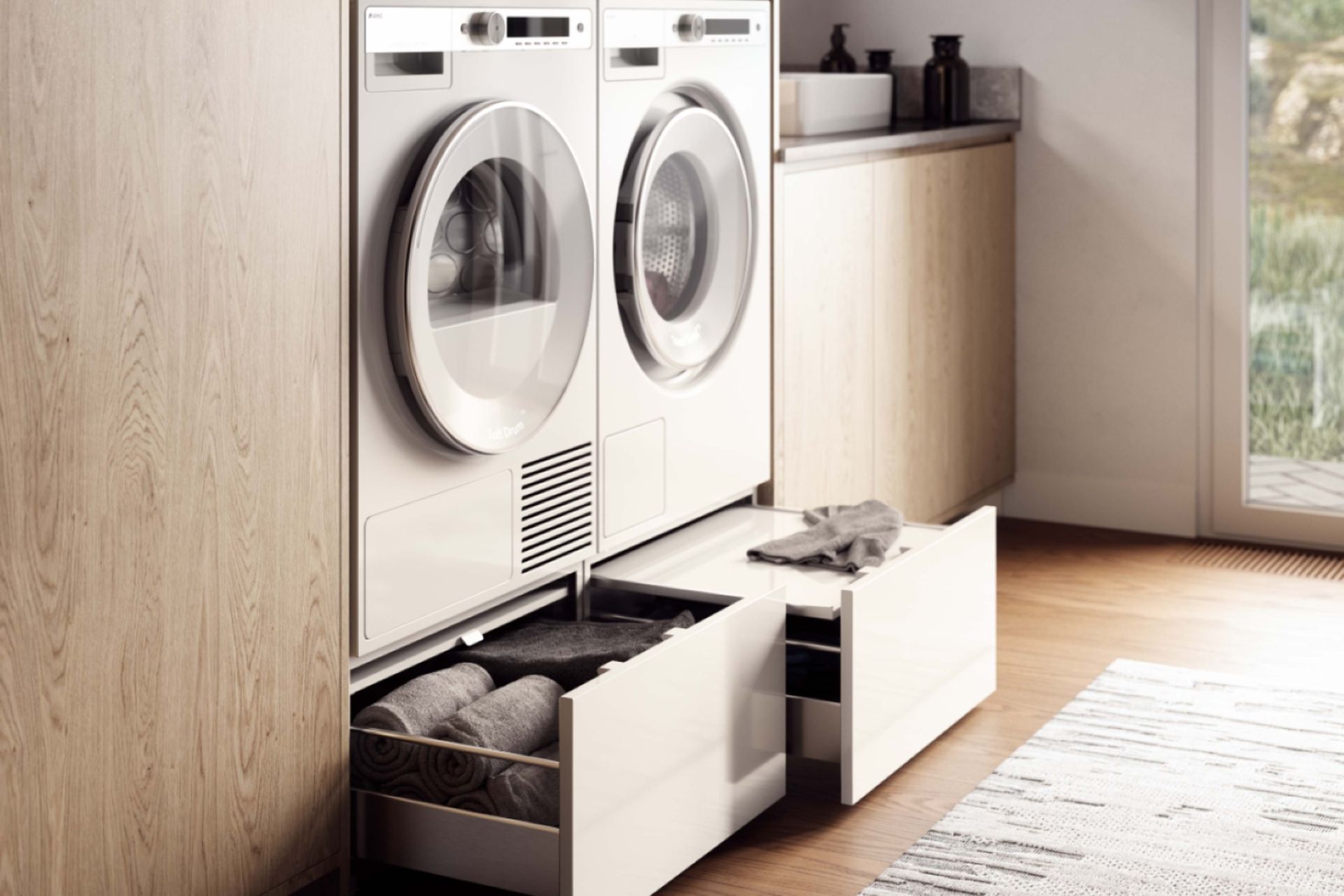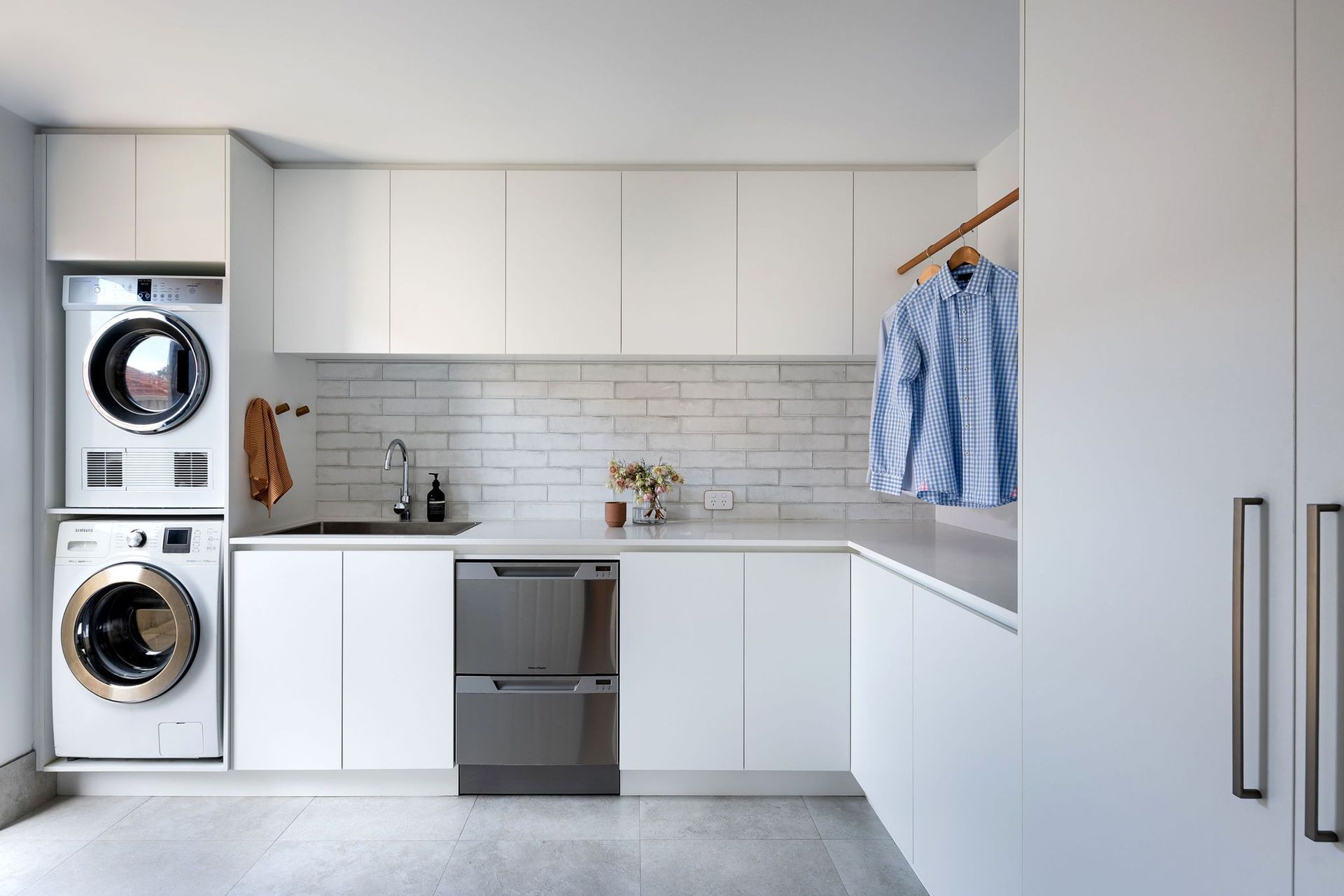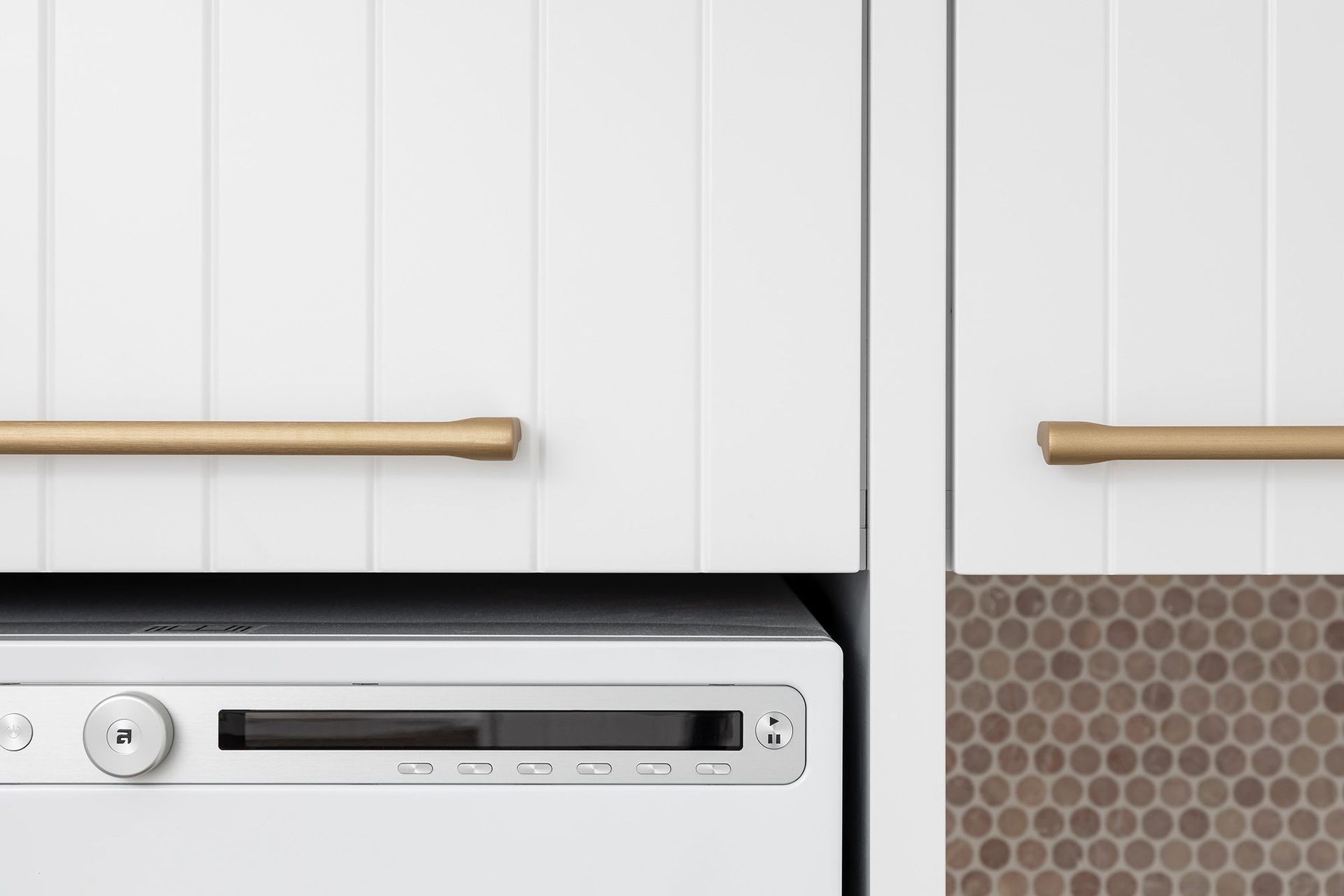Top loader vs front loader washing machines — A comprehensive guide
Written by
19 June 2024
•
9 min read

The discussion between top and front loader washing machines can be quite polarising at times, with many firmly in favour of one or the other. In reality, both can be great solutions in the home, making it more about understanding which might be more suitable for you. By looking carefully at the main traits of each, you’ll be able to make an informed decision and choose the perfect solution that will best suit your needs.
1. Size and capacity
The size and capacity of a washing machine are arguably the most important factors when purchasing for several different reasons. Firstly, you need to choose one that will fit in the space that you have (which is often limited in a laundry room) and you ideally need it to have a large enough capacity to meet your laundry needs.
Top loader washing machines
Top load washing machines are typically 80 - 110 cm in height, 50 - 70 cm in width and 50 - 65 cm in depth, making them slimmer and taller than front loaders. This means they take up less floor space but they do require a bit of vertical clearance as their lid opens upwards.
In terms of capacity, you'll find top loaders between 5 - 15 kg. On average, they tend to be between 7 - 10 kg which accommodates most households.
Front loader washing machines
Front load washing machines are slightly more uniform in size, often measuring around 85 cm in height, 60 cm in width and 50 - 65 cm in depth. Their side-opening door means you'll need a bit of horizontal clearance for easy access. However, given they aren't as tall as top loaders, they often easily fit under benches and provide the opportunity for a dryer to be stacked above which can be a tremendous space-saver.
The capacities of front loaders are similar to top loaders with models between 5 - 15 kg. The average size is probably a little larger, however, with most options between 7 - 12 kg.
Key takeaways
- Top loader washers are slimmer in design making them good for narrow spaces, however, they do require vertical clearance for the lid to open.
- Front loaders are shorter, fitting under benches, and can also be stacked in conjunction with dryers which can save considerable space.
- The capacities of both are similar, though front loader washers are slightly larger on average.

2. Costs
The price of any product has a huge bearing on a purchasing decision and washing machines are no different. However, the initial purchase price isn't the only factor to consider when comparing costs, as you'll need to anticipate its running and maintenance costs too.
Top loader washing machines
Top load washing machines are usually priced between $500 - $1,500 in Australia, though on average you can expect to pay $700 - $1,000. While this is cheaper than most front loaders, they do consume more electricity and water with each standard cycle, increasing your ongoing utility costs. Some models also require more laundry detergent which is another potential cost to be aware of. Maintenance is generally less costly as the components and mechanisms aren’t as complex.
Front loader washing machines
Front load washing machines can range from $700 - $2,000 and above with most people paying between $1,000 - $1,500 on average. As already mentioned, they are more expensive to buy than top loaders but consume less power and water (sometimes 30% less) which makes a difference in the long term. Ongoing maintenance can be more costly though due to the complexity of the products. Most of these washing machines also have seals which could require replacing at some point.
Key takeaways
- Top loaders are generally cheaper to buy than front loaders.
- Front loaders typically use less water and power, reducing their running costs.
- Front loaders can cost more to maintain and repair, being slightly more complex machines.

3. Cleaning performance
Also high on the list, is the respective cleaning performance of both types of washing machines. While this can be quite product-specific, there are a few general comparisons that can be made.
Top loader washing machines
Top loaders with agitator mechanisms (a central pole with fins that spins to move clothes through water and detergent) are effective at removing stains but can be rougher on fabrics. Newer models often use impellers at the bottom of the drum, instead of a central agitator, which are gentler on clothes. Top loaders in general, have shorter washing cycles which can be quite handy but they do often require more water and detergent to produce the same level of cleanliness as front loaders.
Front loader washing machines
Front loaders use a horizontal drum that rotates to tumble clothes using a small amount of water and detergent. They are generally gentler on fabrics while being highly effective at removing dirt and stains. The standard cycle times can be longer compared to top loaders but their horizontal design coupled with high spin speeds, means more water is extracted reducing the drying times afterwards.
Key takeaways
- Top loaders with agitators can be rougher on clothes, however, newer models typically feature impellers which are gentler.
- Top loaders tend to have shorter washing cycles.
- Front loaders are gentler on clothes while being highly effective at cleaning.

4. Energy consumption and water usage
Energy consumption and water usage have been already referenced but it is worth looking at in detail as it is a fairly significant point of difference to analyse.
Top loader washing machines
Standard top loaders will consume between 400 - 1,200 kWh per year and 120 - 150 L of water per load. Their design, where clothes need to be fully submerged in water, and the types of motors they have mean these numbers are higher than front load washers.
Front loader washing machines
Front loaders are known for their water and energy efficiency, a big part of their appeal for many consumers. A typical front loader will consume between 300 - 900 kWh per year and 60 - 90 L of water per load, quite a bit less than top loaders.
Key takeaways
- Top loaders typically consume more water and energy than front loaders.
- There are always exceptions to this rule so it pays to check a product's individual WELS star water rating and annual energy consumption via their energy star rating.

5. User experience
While all the factors mentioned so far are crucial, if a washing machine isn't easy or nice to use, then it's going to cause more displeasure than it's potentially worth. This is another aspect where the two options are quite distinct from one another making it an important one to cover.
Top loader washing machines
Loading and unloading clothes from the top can be easier for some, especially the elderly and those with back problems who find bending down (to access a front loader) difficult. The control panel can also be accessed from a standing position which is also easier. However, those who are short in stature can sometimes struggle to reach the bottom of the drum when unloading wet clothes stuck together in clumps.
Front loader washing machines
Accessing front loaders means bending down which can be a problem for some. However, you can easily place your empty washing basket on the floor closer to the machine so you don't have to move wet clothes as far (contrary to a top loader in the absence of a nearby counter). Clothes often come out of a front loader, dryer and lighter, making them easier to remove. They are also designed to operate more quietly with suspension systems and shock absorbers that reduce vibrations.
Key takeaways
- Top load washing machines can be easier to use for the elderly and those with back issues.
- Those who are shorter in stature can find it hard to reach clothes at the bottom of the drum of a top loader.
- Front loaders tend to be quieter, maintaining the peace of a household.

6. Durability and lifespan
Last but not least, when you invest in a significant laundry appliance, you want it to last, so knowing how durable each of the options is can give you peace of mind about your purchase.
Top loader washing machines
A high-quality top loader washing machine should last at least 10 years. The mechanisms are fairly simple with few components that can wear out. They are designed for rigorous use and their parts are usually easy to replace if required. For a long time, these were the most popular type of washing machine on the market so there is a lot of expertise when it comes to servicing and maintenance.
Front loader washing machines
A high-quality front loader washing machine should also last at least 10 years as they typically represent the latest advancements improving robustness and performance. However, the slightly more complex engineering means there are more parts involved and more things that can potentially fail. Every front load washer also has seals around the door, which are prone to wear and tear, as well as mould and mildew, so need to be cleaned and cared for regularly.
Key takeaways
- Most high-quality top and front load washers should last at least 10 years.
- The simple mechanics of a top loader make them relatively easy to maintain and repair.
- Every front loader has seals which have to be maintained and cared for.
Summary: Which is best for you?
Having covered all the main factors in this top loader vs front loader washing machine guide, you hopefully have a pretty good idea of their qualities and strengths to be able to make an informed decision. We've included a summary of the key points below for reference but it's also important to remember that these products and their traits can be quite specific so be sure to check the credentials of each option you're considering before making your final choice.
Top loader washing machines — final summary
- A good, robust choice for narrow spaces.
- Slightly lower purchase price.
- Shorter washing cycles but typically use more energy and water.
- Agitator models can be rough on delicate fabrics.
- Easy to use and access for the elderly and those with back issues.
- Repairs and maintenance are relatively straightforward.
- A good choice should last at least 10 years.
Front loader washing machines — final summary
- Short enough to fit under benches and stack with dryers which can save space.
- Generally more expensive but includes the latest technology.
- Gentle on clothes without compromising cleaning performance.
- On average use less water, energy and detergent for each wash cycle.
- Requires one to bend down to load and unload clothes.
- Repairs can be more challenging due to more advanced engineering.
- Quieter in operation.
- A quality choice should also last at least 10 years but door seals will need to be maintained.
Related article: Different types of clothes dryers and how to choose one that's right for you